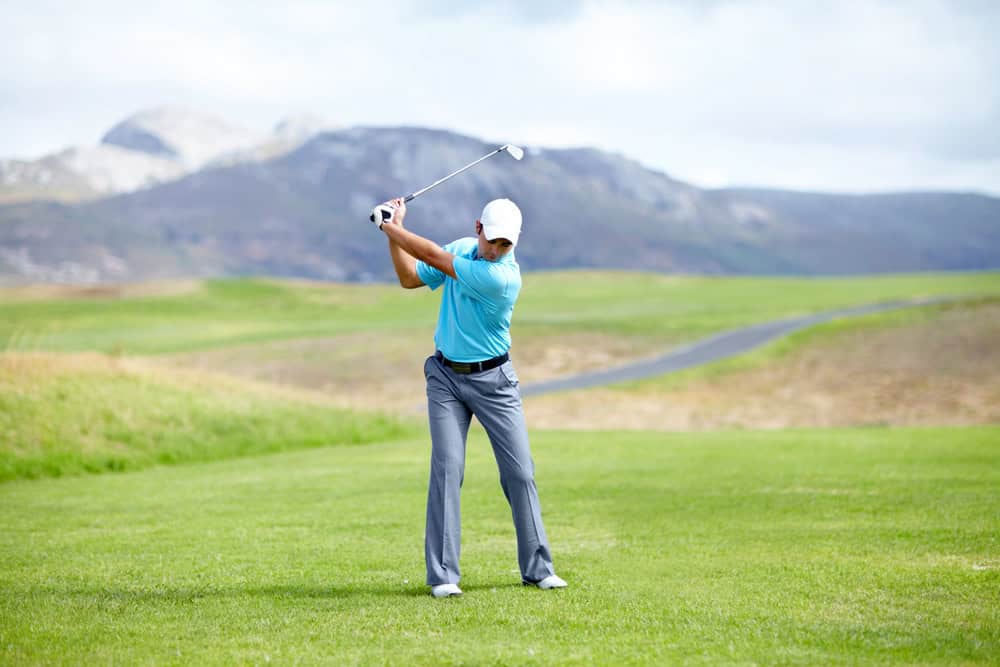
Golf is a sport that blends precision and power. A good golf swing relies on mechanics, which influence how well you hit the ball. The proper golf swing mechanics combine movements from various parts of the body, working together to generate power and ensure accuracy. The golf swing biomechanics at play determine how your body moves and how the clubhead connects with the ball.
When done right, these movements result in a smoother, more consistent swing that can increase both distance and accuracy. Improving your swing requires understanding the phases of a swing, from the backswing all the way to the follow-through.
Understanding the Key Phases of a Golf Swing
Every professional golf swing, despite subtle differences, shares common phases: the backswing, transition, downswing, impact, and follow-through. Each phase is interconnected, and the precision of each movement contributes to the overall performance.
Backswing: The Foundation of a Great Swing
The backswing is the first and most analytical phase of any proper golf swing mechanics. It sets the tone for the rest of the swing. During the backswing, the goal is to rotate your body, making sure of a smooth and controlled motion. The takeaway, which is the start of the backswing, should be smooth and deliberate.
Your shoulders should rotate away from the target as your hands stay relaxed. The lower body, however, should remain stable. A lack of lower body stability will cause unbalanced movement and can throw off the entire swing. Proper balance in the backswing also helps in generating speed during the downswing, which is why controlling it is important for your golf swing biomechanics.
Maintaining balance during the backswing is vital. Cutting it short may feel like you are not completing the movement, but this can often result in a better shot than a longer, imbalanced backswing. When your body stays in the correct posture and your movement stays controlled, you set yourself up for a powerful and accurate shot.
Transition: From Backswing to Downswing
The transition occurs as you shift from the backswing into the downswing. In this phase, the movement of your lower body plays a significant role. Unlike many golfers who focus on their hands and arms during the transition, the most efficient transition comes from rotating your lower body toward the target. As your golf club reaches the peak of the backswing, it is time for your body to pivot.
The lower body initiates this transition. This rotation helps prepare the body for the explosive power needed in the next phase. While your upper body may still be facing away from the target, your lower body leads the charge, allowing your hips and torso to unwind toward the ball. This proper movement makes sure that your clubhead will approach the ball with the necessary speed and precision.
Downswing and Impact: The Power Phase
The downswing is when the magic happens. Here, the goal is to generate speed and power, which will ultimately be transferred to the ball at impact. The start of the downswing involves a coordinated effort between your lower body and your arms. The momentum built during the backswing needs to be transferred seamlessly into the downswing to avoid losing speed and power.
It is at this point that many golfers struggle. A firm grip on the club during the downswing can lead to a misalignment of the clubhead and cause a loss of accuracy. While it is important to maintain some control of the club, you also need to allow for a relaxed grip to enable the club to pass the ball with speed and precision. Tension in the hands can create resistance, preventing the clubhead from reaching its full potential velocity at impact.
At impact, your body and club should be in perfect alignment, and the timing of the collision between the clubface and the ball determines the trajectory and accuracy. If your body is aligned correctly and your swing mechanics are sound, the result will be a powerful, accurate shot. Understanding how golf swing biomechanics works in this phase can help you adjust your movements and achieve more control over your shots.
Follow-through: Maintaining Balance and Power
Many golfers focus so much on the ball strike that they neglect the follow-through. However, the follow-through is just as important as any other phase. The goal of the follow-through is not just to finish your swing but to maintain your balance while guaranteeing the power from the downswing is fully transferred.
A proper follow-through can prevent injuries, especially in the lower back, and contribute to greater shot consistency. The position of your body after impact determines the power and accuracy of your shot. As your club moves through the impact zone, the body should rotate smoothly and evenly, finishing in a balanced stance. This will allow you to maintain control over your shot and keep your body free from strain.
The Role of Body Movement in Golf Swing Biomechanics
The power and consistency of your swing depend on how your body moves through each phase of the swing. Golf swing biomechanics is about understanding how the body works in sync with the club. The kinetic chain, which links your body’s movements from the feet to the clubhead, is vital for maximizing speed, power, and accuracy.
This interconnectedness of movement involves the proper use of muscles, joints, and even the feet. The footwork during the swing is especially important. Pushing off the back foot during the downswing generates power, which is transferred through the legs, hips, and torso, ultimately culminating in a strong, accurate strike. If your body movement is inefficient or disconnected at any point in the swing, it will lead to missed shots and lost distance.
As proper golf swing mechanics require the optimal use of your body’s muscles, improving your flexibility and strength will help in achieving better mechanics. That’s why golf swing training often involves strengthening exercises, stretching, and mobility drills to enhance body movement and improve swing mechanics.
How Golf Swing Biomechanics Influence Performance
When your golf swing is efficient, it maximizes the potential for speed and accuracy. Every golfer has different swing mechanics based on their body type, flexibility, and strength. However, understanding the principles of golf swing biomechanics allows you to refine your swing and optimize your performance.
Improved swing mechanics not only increase power but also reduce the likelihood of injury. A smooth, well-balanced swing reduces the wear and tear on your joints, helping you maintain consistency and avoid unnecessary fatigue. As a result, you can play more frequently and with less discomfort.
Fine-Tuning Golf Swing Biomechanics for Consistency and Power
To further improve your golf swing biomechanics, it is important to understand the role of repetition and practice. Every golfer’s swing is unique, and optimizing mechanics often involves addressing individual needs. However, certain common factors can help make your swing smoother and more consistent. This means focusing on the elements of strength, flexibility, and coordination that directly affect your body’s ability to move efficiently during the swing.
Strength and Flexibility: The Foundation of a Great Swing
The importance of strength and flexibility cannot be overstated when it comes to mastering proper golf swing mechanics. Strength is required to generate power during the downswing, while flexibility helps make sure that your body can rotate freely without restriction. When your body can move through the entire range of motion, it results in a more fluid and controlled swing.
Flexibility, in particular, is vital for maintaining the correct posture and rotation. A limited range of motion in the shoulders, hips, or lower back will not only impact your swing mechanics but also put unnecessary strain on your body. Stretching exercises targeting these key areas, combined with strength training for your core and legs, can help prevent injury and improve your overall swing.
Coordination and Timing: Building Consistency
The proper golf swing mechanics require coordination between all parts of your body. Your lower body, torso, arms, and hands must move in harmony to produce a smooth and effective swing. Timing is just as important; if one part of your body moves too early or too late, it can throw off the entire swing.
For instance, the lower body should start the downswing, followed by the upper body, arms, and finally, the hands. The key to consistency is confirming that each part of the body moves in perfect timing with the others.
Professional Golf Swings: A Product of Practice and Refinement
Achieving a professional golf swing is not an overnight feat. It takes practice, refinement, and a deep understanding of your body’s strengths and weaknesses. Recognizing your limitations and working to improve them will lead to greater success. Your golf swing will continue to evolve as you progress in your training and refine your golf swing biomechanics.
At Berman Golf, we specialize in helping golfers improve their golf swing biomechanics to generate more power, consistency, and accuracy. Our approach focuses on the individual golfer’s body movement, emphasizing balance and coordination in every phase of the swing. Contact us today to improve your swing and enhance your game.

Dr. Jake Berman

Latest posts by Dr. Jake Berman (see all)
- Is Golf Played In The 6 Inches Between Your Ears? Mastering The Mental Game - October 15, 2025
- Golf Hip Turn Vs. Shoulder Turn: Key Differences Explained - October 10, 2025
- 6 Golf Stretches To Relieve Lower Back Pain - October 5, 2025

